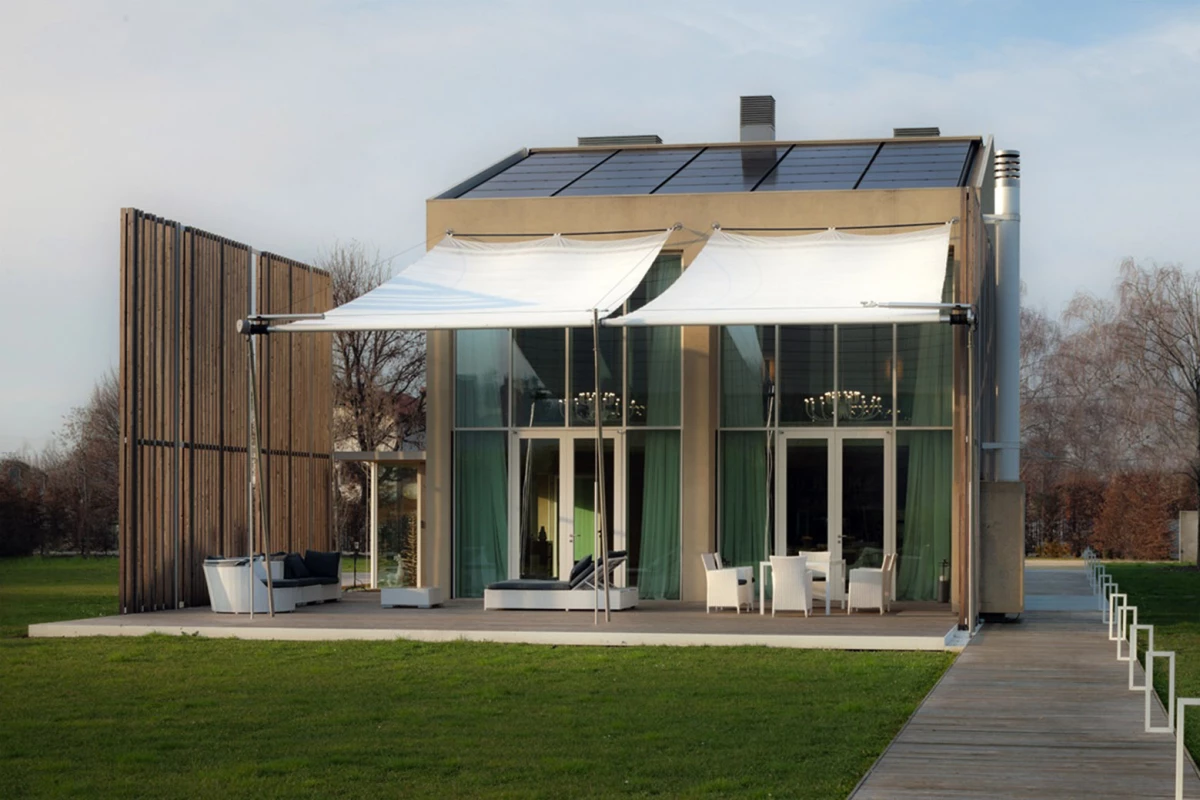There are very few LEED Platinum homes around – the green building standard's highest rating – and this scarcity becomes even more pronounced once you leave the US. Italian home BioCasa 82 boasts bragging rights for being the first private residence in Europe to achieve LEED Platinum, and as you'd expect, it's a very energy-efficient home, deriving 55 percent of all required energy from renewable sources.
Designed by Italy's Rosario Picciotto Architects and built by green building specialists Welldom, BioCasa 82 was completed earlier this year and comprises a total floorspace of 484 sq m (5,209 sq ft). The two-story home is based just outside Montebelluna, a small town not too far from Venice, Italy.
Its rural placement is cited by the architects as the reason that the home scored "only" 117 points out of a total possible 136 and not higher, reflecting LEED's preference for urban homes in a system that also awards points for categories such as the use of sustainably-sourced materials and on-site renewable energy sources.

BioCasa 82 was built using 99 percent recyclable materials, so in the unlikely event it's demolished sometime soon, the great majority of the home need not reach a landfill. The materials used include FSC Certified wood imported from Germany, stone floors quarried in Padua, and locally-sourced concrete.
There's a photovoltaic system on the roof to contribute towards electricity needs, and an efficient geothermal heat pump system provides heat and hot water. The house also features a rainwater catchment system that offers water for both domestic and irrigation use.
A carbon footprint analysis of the home's energy performance was conducted, and it was calculated that during a 100 year span, its carbon footprint would prove 60 percent lower than that of a typical building.
Sources: Rosario Picciotto Architects, Welldom via Arch Daily












